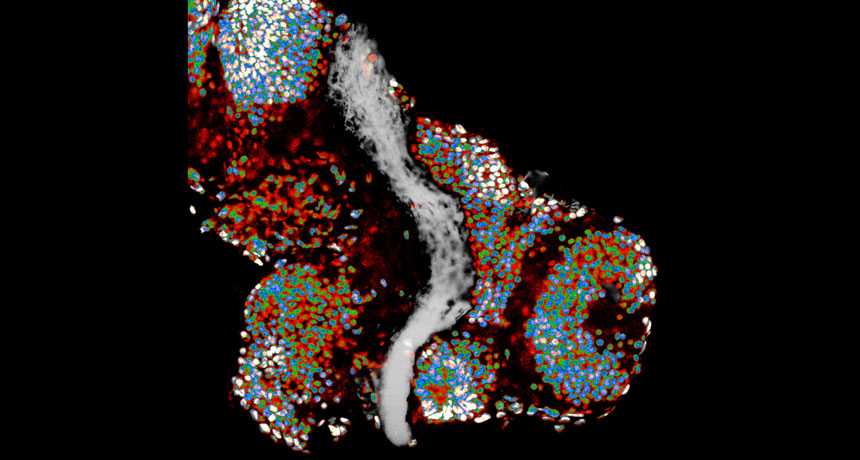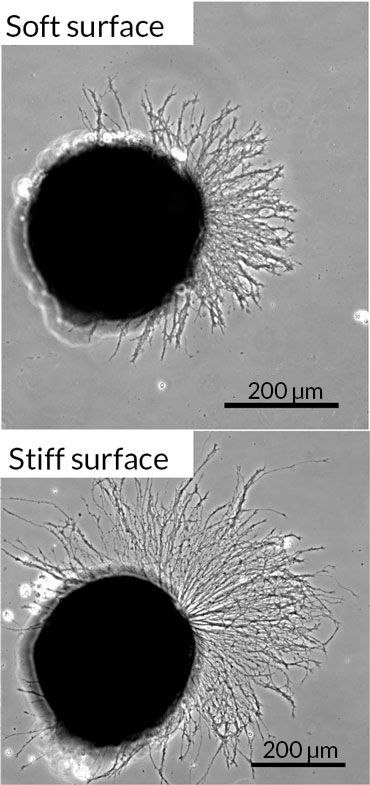Brain’s physical structure may help guide its wiring
Stiffness, softness determine if nerve cells’ axons take straight or meandering path

MAKING CONNECTIONS Axons (grayish-white strands, center) that form a signal-sending pathway in the visual system grow toward their destination in an embryonic frog brain.
Eva Pillai
- More than 2 years ago
In growing brains, billions of nerve cells must make trillions of precise connections. As they snake through the brain, nerve cell tendrils called axons use the brain’s stiffness to guide them on their challenging journey, a study of frog nerve cells suggests.
The results, described online September 19 in Nature Neuroscience, show that along with chemical guidance signals, the brain’s physical properties help shape its connections. That insight may be key to understanding how nerve cells wire the brain, says study coauthor Kristian Franze. “I strongly believe that it’s not enough to look at chemistry,” says Franze, a mechanobiologist at the University of Cambridge. “We need to look at environmental factors, too.”
The notion that physical features help guide axons is gaining momentum, says neuroscientist Samantha Butler of UCLA. “It’s a really intriguing study.” A better understanding of how nerve cells find their targets could help scientists coax new cells to grow after a spinal cord injury or design better materials for nerve cell implants.

In the developing brain, retinal axons grew toward softer tissue, further experiments revealed. When researchers softened brains with a compound, axons veered from their usual route and made more exploratory jaunts. And when researchers squeezed part of the brain with an atomic force microscope, axons avoided the artificially stiff area.
A protein called piezo1 seems to help axons sense stiffness, Franze and colleagues found. When piezo1 levels were reduced, axons grew as if they were in a softer environment; they were shorter and less straight. Soft and hard tissues may both send messages to axons as they traverse the brain. Hard tissue may signal axons to motor through quickly, while softer areas could cue slower exploration as the axons home in on their target.
“This paper provides strong evidence that developing axons can detect and respond to mechanical cues,” says cellular neurobiologist Daniel Suter of Purdue University in West Lafayette, Ind.
It’s not clear whether nerve cells respond to stiffness in species other than frogs. If they do, the results could help people design scaffolds on which implanted nerve cells grow. The results could also lead to a deeper understanding of how wiring can go wrong, which can lead to certain developmental disorders. “There are tremendous implications,” Franze says.






